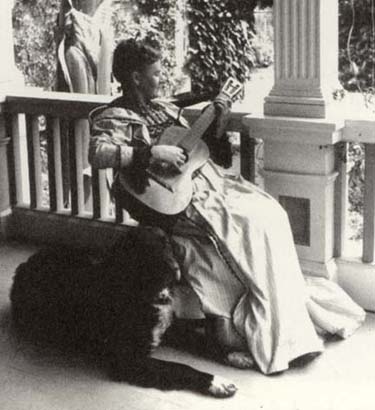Katharine Putnam Hooker was notable among women of her time. She was the niece of Josiah Dwight Whitney of the California Geological survey, there is a famous mountain named for him. Katharine came to California in 1853 via the Panama crossing when her father sent back for her mother and her. They were aboard the SS Tennessee as it approached San Fransisco, struck a rock and sank. Katharine and her mother had shared a stateroom with a Mrs. Chenery. In 1862 Katharine was aboard the Paul Pry when it struck a rock near Alcatraz Island. She was 14 and under the watchful eye of William H. Brewer. Brewer made sure she was placed aboard a lifeboat before finding safety himself. Once aboard the lifeboat Katharine found herself seated next to Mrs. Chenery. At the age of 20 she married John Daggett Hooker and moved to Los Angeles. Around 1886 they built a house at 325 West Adams Street, later renamed to Adams Boulevard, at the northwest corner of Grand Avenue and Adams, later the site of the Orthopedic Hospital. The house was later donated to a family friend, Maude Thomas, who turned it into her St. Catherine's School. I believe it's near the house used for the Munsters exterior shot, if I'm not mistaken.
She was friend to many notable people of the time: John Muir, Elizabeth Stoddard, David Starr Jordan, George Ellery Halel to name a few. She was in San Fransisco in April of 1906 when the earthquake took place. She died in July 1935 at the age of eighty-six.
Far from noir-ish, Katharine was an intellectual and mixed with that type. Her home on West Adams had a large backyard garden and was where John Muir wrote some of his works there.
Here is a photo of Katharine and her dog Lado on the porch of their West Adams Street home.

This information and photo were gathered from the WAHA website located
http://www.westadamsheritage.org



